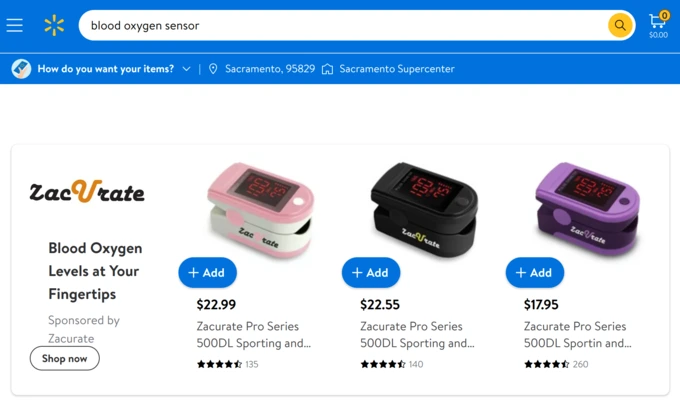Over 500 school districts are suing YouTube, TikTok, Snapchat, Instagram, and Facebook for causing a child mental health crisis and interfering with their educational duties.
These school districts blame social media apps for incentivizing students to participate in trends that damage school property and put school employees in danger. They also blame social media apps for exacerbating a child mental health crisis that puts a greater financial burden on schools that need to hire therapists, train teachers to identify children at risk, and spend time identifying and responding to online school threats.
The lawsuit filings reference dozens of research papers to back up their claims of deteriorating child mental health.
From 2007 to 2019, the suicide rate among American youth age 10-24 increased by 57%. From 2009 to 2019, the rate of high school students who reported persistent feelings of sadness or hopelessness increased by 40% to one out of every three kids.
But proving that kids’ mental health is deteriorating isn’t enough to win the lawsuit, even if the schools can prove that the deterioration is due to social media. That’s because in order for an internet company to be held liable, the schools need to get past Section 230: the single most important law of the internet that says tech companies aren’t liable for content posted by third parties.
There is bipartisan momentum towards removing some of Section 230’s protections, but as of now that momentum hasn’t made it into final legislation.
The schools’ lawsuit takes a three-pronged approach to bypassing Section 230:
- The schools accuse social media companies of marketing their products to teens and preteens, despite knowing that social media is harmful to kids. Since marketing is not part of publishing, section 230 doesn’t protect social media companies from deceptive advertising charges.
- The schools accuse social media companies of designing algorithms that maximize engagement, despite knowing that such algorithms are likely to promote emotionally distressing content.
- The schools claim features like “suggested accounts to follow” are not protected by Section 230.
All three approaches are based on the legal theory of so-called “public nuisance”. A public nuisance is legally defined as something that harms a large proportion of a community — in this case, the community of school-age kids and school employees. Public nuisance is the same legal theory that required Juul, the e-cigarette company, to pay billions of dollars to settle with school districts and other plaintiffs over deceptive marketing to kids.
Juul bought adspace on kid-focused websites like Nickelodeon, Cartoon Network, and Seventeen. If TikTok or Snapchat did something similar, then it’s possible that the school districts may win at least part of the case. However, the most likely outcome is still that Section 230 protects big tech companies from liability.
Appendix A: Quotes & Stats from the Case
- 7% of American teens have had explicit images of them shared without their consent.
- 16% have received physical threats online.
“Researchers studying the effect social media has on the brain have shown that social media exploits ‘the same neural circuitry’ as ‘gambling and recreational drugs to keep consumers using their products as much as possible’.”
Seattle Lawsuit
“The rates at which children have struggled with mental health issues have climbed steadily since 2010 and by 2018 made suicide the second leading cause of death for youths.”
Seattle Lawsuit
“From 2009-19, the rate of high school students who reported persistent feelings of sadness or hopelessness increased by 40 percent (to one out of every three kids). The share of kids seriously considering attempting suicide increased by 36 percent and the share creating a suicide plan increased by 44 percent. From 2007 to 2019, suicide rates among youth ages 10-24 in the United States increased by 57 percent.”
Seattle Lawsuit
“Meta’s algorithms are not based exclusively on user requrests or even user inputs. Meta’s algorithms combine information entered or posted by the user on the platform with the user’s demographics and other data points collected and synthesized by Meta, make assumptions about that user’s interests and preferences, make predictions about what else might appeal to the user, and then make very specific recommendations of posts and pages to view and groups to visit and join based on rankings that will optimize Meta’s key performance indicators. In this regard, Meta’s design dictates the way content is presented, such as its ranking and prioritization.”
Seattle Lawsuit
The lawsuit makes several accusations:
- Increasing depression among adolescents by encouraging unhealthy social comparison and feedback seeking behaviors.
- Contributing to sleep deprivation by sending push notifications and emails at night when children should be sleeping.
- Contributing to educational deficits by sending push notifications and emails during school hours.
- Contributing to eating disorders.
- Contributing to cyberbullying.
Schools say they have had to spend extra money to deal with these problems, including money to:
- Hire additional mental health professionals,
- Provide teachers and staff with additional training to identify students suffering from mental and emotional health issues,
- Educate students about the dangers of social media,
- Repair or replace school property damaged by students acting upon harmful trends they found on social media,
- Spend time meeting with students and the parents of students caught using social media at school, and
- Investigate and respond to threats made against schools and students over social media.
Appendix B: What is Public Nuisance?
The definition of public nuisance is different from one state to another (public nuisance is a state law level concept). However, in general, a public nuisance refers to an activity that harms a large proportion of a community.
Appendix C: Definition of Public Nuisance in California
In California, section 360 of the Penal Code defines a public nuisance as “anything which is injurious to health, or is indecent, or offensive to the senses, or an obstruction to the free use of property, so as to interfere with the comfortable enjoyment of life or property by an entire community or neighborhood, or by any considerable number of persons, or unlawfully obstructs the free passage or use in the customary manner, or any navigable lake, or river, bay, stream, canal, or basin, or any public park, square, street, or highway.”
Appendix D: Definition of Public Nuisance in Washington State
In Washington, RCW 9.66.010 defines a public nuisance as a crime against the order and economy of the state, including every place:
- Wherein any fighting between people or animals or birds shall be conducted; or
- Wherein any intoxicating liquors are kept for unlawful use, sale, or distribution; or
- Where vagrants resort.
Additionally, Washington includes some acts in its definition of public nuisance.
Every act unlawfully done and every omission to perform a duty, which act or omission:
- Shall annoy, injure or endanger the safety, health, comfort, or repose of any considerable number of persons; or
- Shall offend public decency; or
- Shall unlawfully interfere with, befoul, obstruct, or tend to obstruct, or render dangerous for passage, a lake, navigable river, bay, stream, canal or basin, or a public park, square, street, alley, highway, or municipal transit vehicle or station; or
- Shall in any way render a considerable number of persons insecure in life or the use of property;
is a public nuisance.
References
[1] WSJ: Schools Sue Social-Media Platforms Over Alleged Harms to Students. July 23, 2023.
[2] Seattle School District No 1 v. Meta, Alphabet, Snap, and Bytedance. Jan 6, 2023.
[3] Frantz Law Group: Social Media Litigation
[4] Keller Rohrback L.L.P. social media litigation





